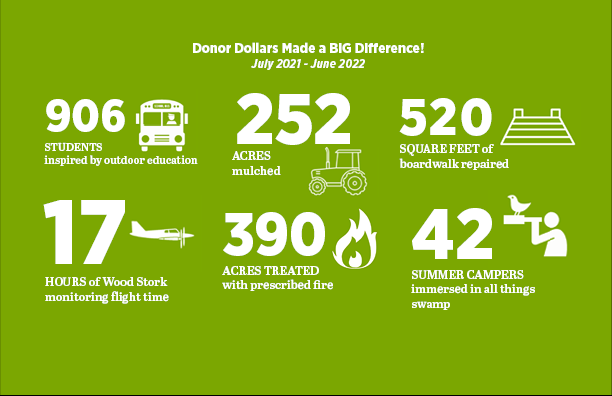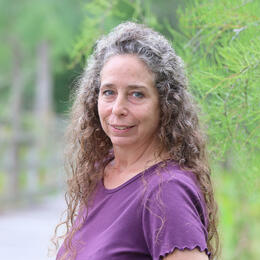Have you seen a ghost?
Like tiny fireworks, the first buds on the “Super” ghost orchid at Corkscrew Swamp Sanctuary began blooming in time for the July Fourth holiday weekend. The “Super” ghost orchid is so named because of its record-breaking number of blossoms. The “Super” ghost orchid, located about 70 feet off the ground and roughly 100 feet away from the boardwalk, bloomed all summer despite a few caterpillars that had been munching on its blossoms. This is nature taking its course and the plant, itself, is not damaged. Luckily, the Sanctuary provides the perfect habitat for an unknown number of these delicate plants. The “Super” ghost orchid typically blooms into October. To see it, binoculars or telephoto zoom lens are recommended.

Donor dollars at work!
If you’ve ever visited Corkscrew Swamp Sanctuary, you might have noticed an offshoot of the public boardwalk just after the north Lettuce Lake. This section, called the Corkscrew Learning Amphitheater and Student Sanctuary (C.L.A.S.S.), is a dedicated boardwalk area for youth education and special programs or events. It has been completely closed for the past few years awaiting repair. Thanks to the generosity of more than 100 donors who answered our call for support this past April, the repairs are now complete! The renovation of this area was finished just in time for our summer camp programs, as well as the guided “forest bathing meditation” we hosted during the National Hammock Day Event at the Sanctuary on July 22. The amphitheater is now available for other public programming. Take a quick trip to the C.L.A.S.S. loop through a short video, and be sure to turn up the volume! Watch the short video here.

Article originally appeared in Audubon Florida's Fall Naturalist magazine.




